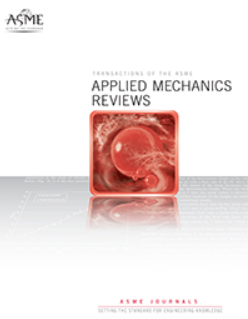Refined and Simplified Simulations for Steel–Concrete–Steel Structures
IF 16.1
1区 工程技术
Q1 MECHANICS
引用次数: 0
Abstract
Steel–concrete–steel (SCS) sandwich structures have gained increasing interest in new constructions. The external steel plates increase the stiffness, the sustainability, and the strength of the structures under some extreme solicitations. Moreover, the use of these plates as lost prefabricated formwork makes SCS structures modular, enabling higher construction rates. However, for a better understanding of the complex behavior of these structures up to failure, refined numerical simulations are needed to consider various local phenomena, such as concrete crushing in compression and interface interactions. Indeed, the highly non-linear steel–concrete interaction around the dowels is the key point of the composite action. In this contribution, a refined methodology is first proposed and applied on a push-out test. It is especially demonstrated that a regularization technique in compression is needed for the concrete model. Interface elements are also developed and associated with a nonlinear constitutive law between steel connectors and external plates. From this refined methodology, simplified numerical modeling is then deduced and validated. Directly applied to an SCS wall-to-wall junction, this simplified strategy enables the reproduction of the overall behavior, including the elastic phase, the degradation of the system, and the failure mode. The response of each component is particularly analyzed, and the key points of the behavior are highlighted.钢-混凝土-钢结构的精化与简化模拟
钢-混凝土-钢(SCS)夹层结构在新型建筑中受到越来越多的关注。外部钢板增加了刚度、可持续性和结构在一些极端条件下的强度。此外,使用这些板作为丢失的预制模板使SCS结构模块化,从而实现更高的施工率。然而,为了更好地理解这些结构直至破坏的复杂行为,需要精确的数值模拟来考虑各种局部现象,例如混凝土在压缩中的破碎和界面相互作用。事实上,销子周围高度非线性的钢-混凝土相互作用是复合作用的关键点。在此贡献中,首先提出了一种改进的方法,并将其应用于推出测试。特别说明了混凝土模型在压缩过程中需要正则化技术。界面单元也被开发并与钢连接件和外板之间的非线性本构律相关联。在此基础上,推导并验证了简化的数值模拟方法。直接应用于SCS壁对壁连接处,这种简化的策略可以再现整体行为,包括弹性阶段、系统退化和失效模式。对各部件的响应进行了详细的分析,并强调了其行为的关键点。
本文章由计算机程序翻译,如有差异,请以英文原文为准。
求助全文
约1分钟内获得全文
求助全文
来源期刊
CiteScore
28.20
自引率
0.70%
发文量
13
审稿时长
>12 weeks
期刊介绍:
Applied Mechanics Reviews (AMR) is an international review journal that serves as a premier venue for dissemination of material across all subdisciplines of applied mechanics and engineering science, including fluid and solid mechanics, heat transfer, dynamics and vibration, and applications.AMR provides an archival repository for state-of-the-art and retrospective survey articles and reviews of research areas and curricular developments. The journal invites commentary on research and education policy in different countries. The journal also invites original tutorial and educational material in applied mechanics targeting non-specialist audiences, including undergraduate and K-12 students.

 求助内容:
求助内容: 应助结果提醒方式:
应助结果提醒方式:


